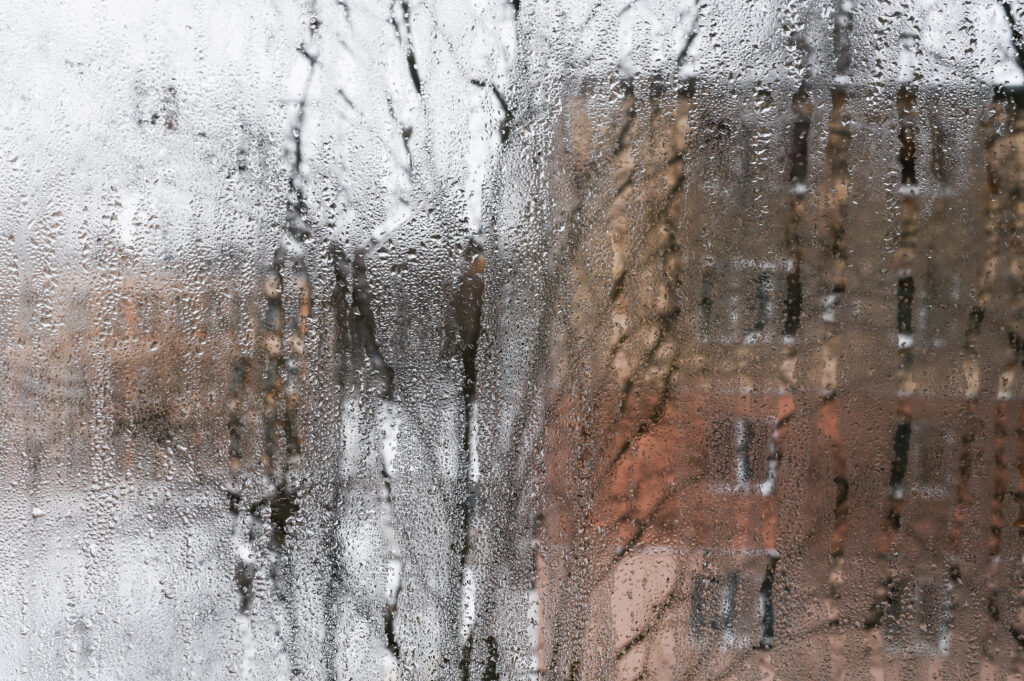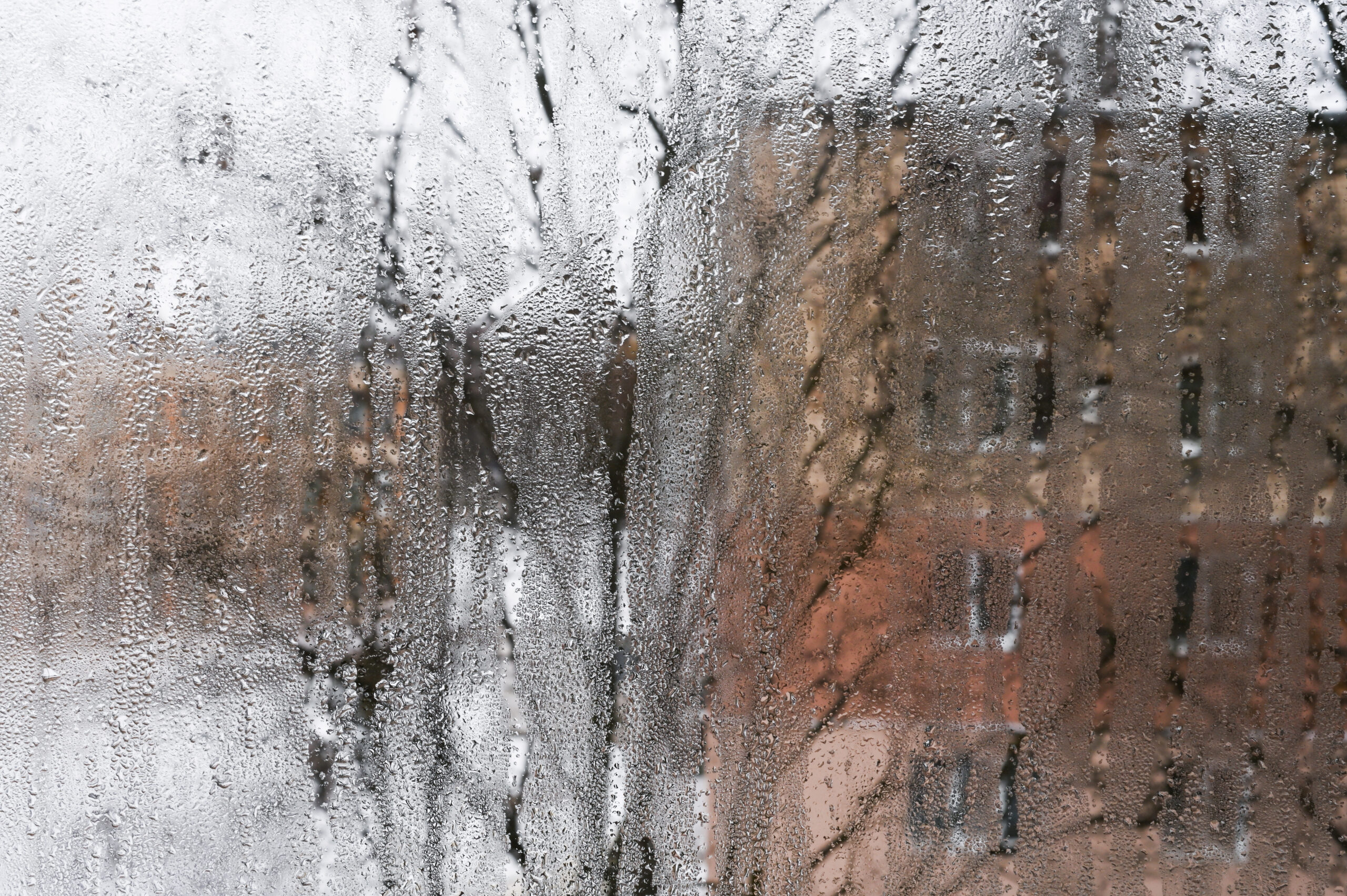Condensation on double-glazed windows is a common issue for UK homeowners, particularly during the colder months of the year. If you’ve ever woken up to misted-up glass, water pooling on your window sills, or even signs of mould growth, you’re not alone.
While double glazing is designed to improve insulation and energy efficiency, it can sometimes reduce ventilation, trapping moisture inside the home.
Many people assume that condensation is just a minor inconvenience, but excess moisture can lead to more serious problems. Over time, it can damage window frames, affect indoor air quality, and encourage dampness or mould growth, which may harm your respiratory health.
Fortunately, air ventilation windows provide a practical solution. By allowing controlled airflow while maintaining insulation, they help to regulate indoor humidity and prevent moisture build-up.
At County Secure, we understand how frustrating persistent condensation can be – especially when you’re unsure of the best solution. In this guide, we demystify window ventilation, explaining how air ventilation windows work, their benefits, and how to choose the right option for your home.

What Causes Condensation on Double-Glazed Windows?
Condensation occurs when warm, moisture-filled indoor air meets a cooler surface, such as a double-glazed windowpane. This temperature difference causes the excess moisture in the air to condense into water droplets, which cling to the cold surface of the window glass.
Modern homes are built with better insulation and airtight seals to improve energy efficiency, but this also reduces natural airflow. Without proper ventilation, the moisture released into the air by everyday household activities (like cooking, showering, and drying clothes inside) has nowhere else to escape, which increases indoor humidity.
If humidity regularly exceeds 60%, the water vapour in the air can not only cause condensation, but also damage wooden window frames, cause peeling paint, and encourage dangerous black mould to develop around the edges of windows.
Certain factors can make these issues worse, including blocked air vents, inefficient or ageing window designs, and inconsistent heating. Fortunately, window vents provide an effective way to combat condensation.
How Air Ventilation Windows Help Combat Condensation
Proper ventilation is the key to reducing condensation, as it removes excess moisture from the air before it condenses. Air ventilation windows are designed to allow airflow while maintaining insulation, keeping your home warm, dry, and energy-efficient
These windows contain built-in ventilation systems that replace moisture-heavy indoor air with a steady flow of outside air.
This regulates humidity levels, balances indoor temperatures, and prevents glass from becoming excessively cold, all of which significantly reduce condensation build-up.
Trickle Vents: A Simple and Effective Solution
One of the most effective features of any air ventilation window is the small, adjustable trickle vent built into it. Unlike opening a window fully, which can lead to heat loss, trickle vents provide consistent airflow without significantly affecting room temperature.
Usually located at the top of the window frame, trickle vents work by removing stale, moisture-heavy air and replacing it with fresh, drier air from outside that can circulate naturally.
They are particularly useful in areas where moisture levels are usually higher, such as bedrooms, bathrooms, and kitchens.
Benefits of Installing Air Ventilation Windows
Preventing Condensation and Mould Growth
The most immediate benefit of installing air ventilation windows is a noticeable reduction in condensation. By allowing moisture to escape, these windows prevent damp patches from forming on walls and window frames.
Excess moisture is a leading cause of mould growth, which not only looks unsightly but can also pose health risks. Mould spores trigger allergies and respiratory issues, making a well-ventilated home essential for maintaining good indoor air quality.
This is particularly important in older UK homes where poor ventilation is common, which often leads to persistent condensation problems.
Improving Indoor Air Quality
A poorly ventilated home can feel stuffy and uncomfortable, with stale air full of dust, allergens, and lingering odours from cooking or pets. Air ventilation windows promote continuous airflow, ensuring a fresher, more pleasant living environment.
Studies show that 50% of all illnesses are caused or aggravated by poor indoor air quality. Therefore, for households with asthma sufferers or those sensitive to allergens, better ventilation can make a significant difference in reducing airborne irritants and improving long-term health.
Energy Efficiency Without Heat Loss
Many homeowners hesitate to open their windows during colder months because they don’t want to let heat escape. However, poor ventilation can result in excessive humidity, which can make your home feel damp and uncomfortable.
With air ventilation windows, you don’t have to compromise between ventilation and warmth. These windows allow for a controlled flow of fresh air without causing significant heat loss, keeping your home comfortable and energy-efficient. Certain designs, like those offered by County Secure, even incorporate insulated trickle vents or heat recovery ventilation systems to enhance energy savings while preventing moisture build-up.
Meeting Building Regulations for Ventilation
Ventilation isn’t just a matter of comfort – it’s also a requirement under UK building regulations. Proper airflow is necessary to prevent condensation-related damage and ensure that homes remain structurally sound.
According to FENSA, homeowners replacing their windows must ensure that they meet building regulations for adequate ventilation. Installing air ventilation windows is a simple way to comply with these rules while improving your home’s efficiency and comfort.
Choosing the Right Air Ventilation Solution for Your Home
Not every home requires the same type of ventilation, so it’s important to choose a system that suits your property’s needs.
- Trickle Vent Windows: For most modern homes, trickle vents are the simplest and most effective solution. These vents can be incorporated into existing double-glazed windows or installed in new air ventilation windows.
- Passive Ventilation Systems: Some homes benefit from passive ventilation systems, which work without electrical components. These systems use natural air pressure differences to create a steady flow of fresh air while removing moist, stale air from the home.
- Mechanical Ventilation Systems: In homes with high humidity levels, mechanical ventilation systems such as heat recovery ventilators (HRVs) or positive input ventilation (PIV) systems may be the best solution. These systems actively extract moisture while maintaining energy efficiency by recovering heat from outgoing air.
Upgrade Your Windows with County Secure
Condensation on double-glazed windows is a persistent problem for many homeowners, but it doesn’t have to be.
Air ventilation windows offer an effective way to control indoor humidity, reduce condensation, and maintain a healthier, more comfortable home.
By allowing controlled airflow without significant heat loss, these windows help prevent mould growth, improve air quality, and enhance energy efficiency. Whether you choose trickle vents, passive ventilation, or a mechanical system, the right ventilation solution can make a lasting difference in your home.
If you’re struggling with condensation issues, County Secure offers professional ventilation and draught-proofing solutions. Contact us today to learn how we can help improve your home’s air quality while keeping condensation under control.
County Secure
